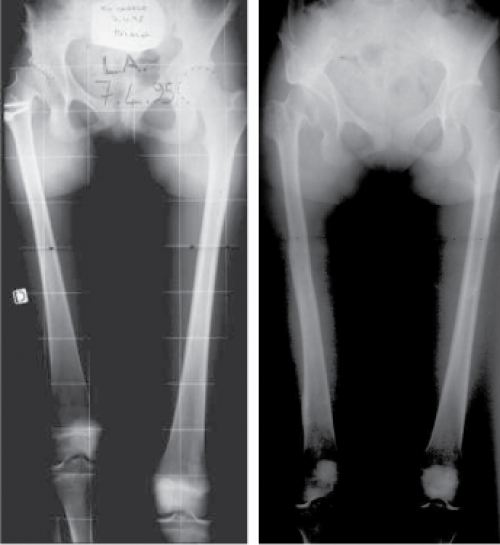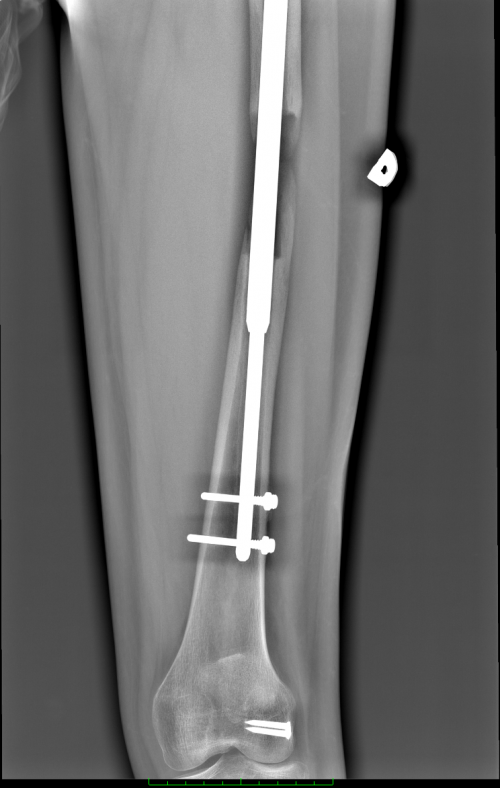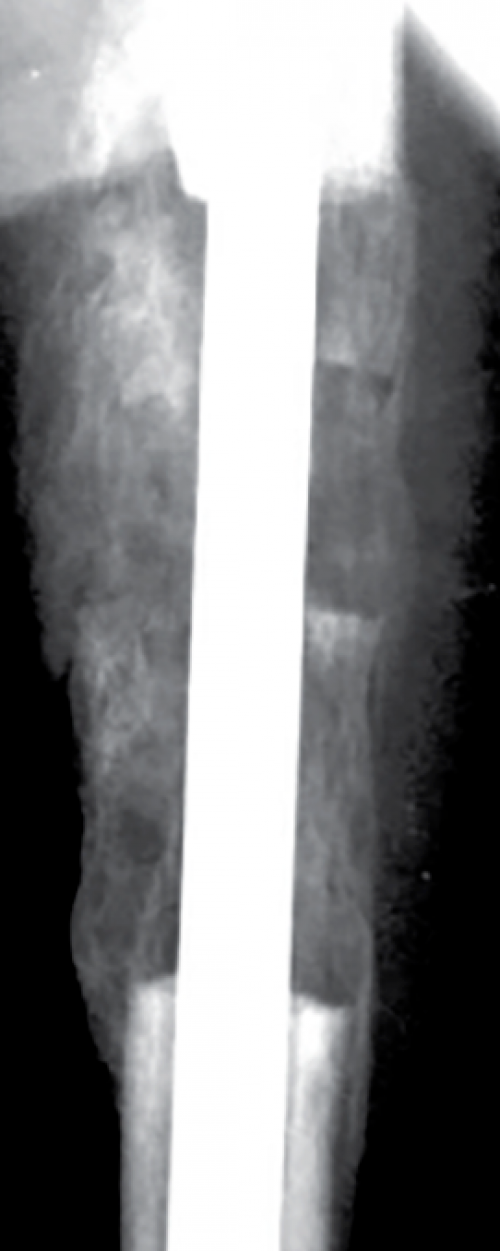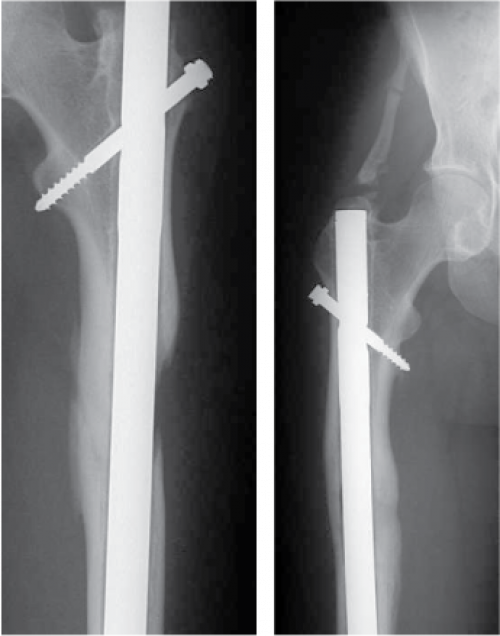
The risks are not negligible because it is a heavy and functional operation, and not a 'resurfacing' of subcutaneous tissues as in traditional cosmetic surgery. Depending on the reasons for elongation, they may differ slightly, particularly in unilateral, bilateral elongations for dwarfism or aesthetics. The psychological implications or risks are not to be underestimated. A patient should always be carefully informed. The complete explanations and informed consent will make it possible to know exactly the risks associated with the practice, which Dr Guichet has succeeded in making inferior thanks to his studies and his practice, thanks to over 30 years of experience since he conceived the first nail (Albizzia), creating new quality standards. The elongations with the nails expose altogether to inferior complications regarding the external fixators, but it is however necessary to specify the main risks: • The pain is constant, but lower than that of external fixators. • Infections (rare with nails, especially in the femur) • Type of stiffness • Early or slow ossification • Vascular, epidermis, weight loss, depression, etc. • Feeling of major discomfort It should be noted that to date the lengthening of the femur with the technique of Dr Guichet has not generated bone infections (obstetitis, osteomyelitis) nor paralysis.
The risk should not be overlooked because it is in any case a surgical operation. Some risks vary in the case of unilateral, bilateral lengthening for dwarfism or aesthetic bilateral. And together with them it is essential to always consider the psychological aspect. Apart from the risk of early ossification, the complications depend mainly on the initial pathology: for example, if one of the joints of the elongated bone is unstable, you will run the risk of incurring a dislocation. If the patient has presented an important infection in the bone that needs to be stretched, the risk of infection will be higher than that of a patient who has not had previous infectious incidents.
Without previous infectious incidents, a femoral elongation with the protocol validated by Dr Guichet presents less than 1% risk of bone infection (compared to 16% average in other groups with the use of external fixators).
Generally, a good initial assessment and a strict control must allow to obtain an elongation without real complications. The surgeon will then be able to predict the risk of each complication in the assessment and assess its importance.
Complications generally occurred in the elongation phase (cliquetage difficulties) etc. ). Sometimes at the end (slow ossification, etc. ).


In the cases of dwarfism the increases are often considerable (15-18 cm per bone segment with the nail Albizzia, current Guichet). The risks typical of external fixators decrease considerably, but without being completely eliminated. The biarticular muscles have a rigidity that modifies the joint play but that, generally, is recovered in a few weeks at the end of the elongation. A flexum can be found, especially in cases of very important elongations (40-60% of the initial bone length) or passive stretching not controlled by the patient, which slowly regresses at the end of the elongation. It is often aggravated by the natural flexum (bone) of achondroplasic patients. There are rarely cases of nervous reactions, which are usually moderate and do not lead to paralysis. In general, there are no infections, stiffness, or permanent paralysis of the nerves, consequences that may occur with external fixators. The osteoporosis found with external fixator, which can also occur in the elongation with an internal technique (nail), does not occur in cases of percutaneous elongation by means of nail Albizzia current Guichet (G-Nail), if the following re-education and walking protocols are observed. Knee pains often occur. It is necessary to move the limb a lot to ¿drain' the joint fluid of the knee. The pain decreases progressively at the end of the lengthening.
The problem of intense ossification is frequent because it follows rules and a particular kinetics. Ossification, in fact, increases during the first 2-3 post-operative weeks and becomes maximum in the 3-4 post-operative weeks. In this period, an early ossification may occur which must be controlled and anticipated in order to avoid further surgery or correction under general anesthesia. This phase is carried out without unforeseen unforeseen checks (new interventions). In the elongations due to low constitutional stature the risk disappears after 4-5 weeks, whilst in the cases of achondroplasia (dwarfism), such phase can last from 6 to 8 weeks.
A bad nervous reaction can occur especially when, in order to counteract premature ossification, the elongation rate is prolonged over time (example: 1.5 mm/g for 2-3 weeks).
In these cases you may notice initially an increase in sensitivity (too strong perception of the tissues on the back of the foot and ankle), which will decrease later. Motor manifestations occur later than sensory ones, and can slow motor recovery.
The skin, being very tight, sometimes causes transient burning sensations. In case of previous lengthening with external fixator, any stress on the old adherent scars can cause unpleasant sensations. An aesthetic recovery of the scars, at the end of the lengthening, will eliminate the problem.



The real complications are very rare if you respect the potential and growth abilities tolerable by the patient based on his biology (elasticity of muscles and tendons, joint laxity, reaction to preoperative training).
Some effects inevitably occur (decrease of joint mobility, rigidity of the ischio-crurali, of the anterior rectums, etc.), but regress without consequences on the patient.
There may also be an intense ossification, easily managed by the surgeon who, by "eliminating" any problems (adaptation of the elongation rhythm in the first weeks), excludes the possibility of new interventions.
Some complications are rare (ossification defect, problems related to nervous strains, complications that heal without consequences), while others are virtually non-existent (osteoporosis, final stiffness, lameness, etc., although they occur instead in elongations with external fixators). In conclusion, a well-planned elongation leads to functional success, allowing the patient to resume his normal activities, sports and professional. For a long period after lengthening, there will be no decrease in motor skills, rather as improvements are observed (faster walking, etc.).
The complications obviously depend on the experience of the surgical team, the load of the patient and the observance, during the lengthening period, of the pre or post operative training prescriptions. Otherwise, major complications could occur, for example: paralysis or lack of ossification, due to too large a gain desired and managed independently by the patient or obtained too quickly; persistent rigidity, for the lack of proper preparation for the intervention or sports inactivity in the post-operative, etc. The experience and techniques developed over 30 years by Dr Guichet, together with his team, will help to avoid such complications.
Each elongation is a very difficult time to face as it also destabilizes emotions, as sometimes happens during growth. On the contrary, a well prepared and motivated lengthening, lived will lead, as a side effect but not less important, to an increased self-confidence and an improved level of self-esteem. As witnessed by most patients. In the case of parents who have a child with deformities such as dwarfism, or traumatic consequences, it often happens to observe the child in relation to themselves and the ideal representation that one would want of the child. Dr Guichet has created a multidisciplinary team to support patients, considering the psychological aspect to be a fundamental part of the success of every single project.
The physical changes of an elongation are similar to those that occur during growth towards the age of 5 years. Body changes in the post-op are experienced in a complex and sometimes difficult way, leading to a psychological regression that refers to that period. The patient then becomes intolerant, difficult in relations with those beside him, lost and in suffering. All this may require psychological support and/or the prescription of drugs to manage the state of anxiety created. A good preoperative evaluation allows to better manage a possible post-operative problem.
This attitude has important consequences. Wanting to "normalize" the stature of a child acondroplasic, however, will not normalize the numerous traits typical of acondroplasia (face, upper limbs, etc.). If the parents want "the perfect child" (let’s be clear, in relation to the standards), they must understand that the intervention will only change the parameter ¿statura', while the other physical parameters will remain unchanged. Perhaps it will be enough to realize that the child is already perfect... physically and affectively. In any case it is recommended to plan not only medical surgical treatment, but also psychological support for all family members.
Weymouth Street Hospital
42-46 Weymouth St.
London W1G 6DR, UK
Phoenix Hospital Group
9 Harley Street
London W1G 9QY, UK
Harley Street Specialist Hospital
18-22 Queen Anne St.
London W1G 8HU, UK
Studio Dr. Guichet
Corso Magenta, 44
20123 Milano, IT
+39 0236758514